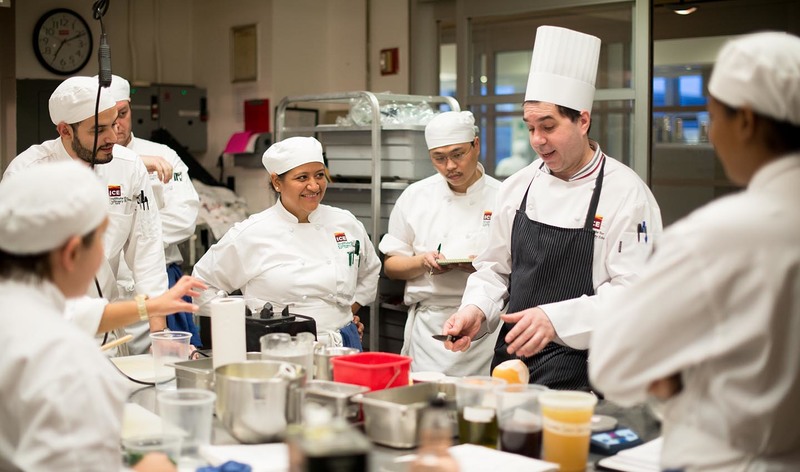Robert Hall’s Updates
Update 3: Situated Learning – The Culinary Arts Classroom as a Community of Practice
Jean Lave proposes the idea that learning is “a function of the activity, context and culture in which it occurs; learners become involved in a “community of practice” which embodies certain beliefs and behaviors to be acquired.” Those beliefs and behaviors to be acquired are outlined in the following graphic:
What is the content and does it lead to critical thinking and analysis? Is the context appropriate to allow for and foster learning? Does the environment nurture collegial expression and sharing of newly acquired knowledge? Does the setting promote involvement and complete engagement?
The natural environment of the traditional culinary and pastry arts classroom is an environment of situated learning. It is a place in which, “learning is embedded within activity, context and culture.” Other researchers have supported situated learning; Brown, Collins & Duguid have suggested, “Cognitive apprenticeship supports learning in a domain by enabling students to acquire, develop and use cognitive tools in authentic domain activity.” This is the foundation of learning in culinary school. Students are placed in classrooms and learning other learning environments that provide social and physical context as well as training and preparation for future careers.
Students in culinary school, from the very first classes in the beginning of their educational experience and careers, are exposed to the classical organization of the professional kitchen. They learn, by practice, the hierarchy of Executive Chef, Chef de Cuisine, Sous Chef, Chef de Partie, Commis, and so on. Lave commented about this interesting phenomenon in her UC Berkley presentation; she said: “One way to think about the surprising complex and contradictory and multidirectional character of learning is that we are always learning what we are already doing. That makes us apprentices to our own changing practice.”
As a ‘community of practitioners,” culinary and pastry students learn through participation. They learn by doing, often times learning later processes, procedures, and tasks they have already practiced. They will make a stock and soup in a beginning class, for example, but study the deep and broad subject of stocks, soups, and sauces in an advanced class. They succeed, though, within the community of the culinary class and from the experience, insights, and input of fellow students as well as instructors.
Resources
http://newlearningonline.com/new-learning/chapter-6/lave-and-wenger-on-situated-learning
https://www.instructionaldesign.org/theories/situated-learning/
Brown, J.S., Collins, A. & Duguid, S. (1989). Situated cognition and the culture of learning. Educational Researcher, 18(1), 32-42.
Lave, J., & Wenger, E. (1990). Situated Learning: Legitimate Periperal Participation. Cambridge, UK: Cambridge University Press.
McLellan, H. (1994). Situated learning: Continuing the conversation. Educational Technology, Vol. 34, No. 10, pp. 7-8.
Resnick, L. (1987). Learning in school and out. Educational Researcher, Vol. 16, No. 9, pp. 13-20.




